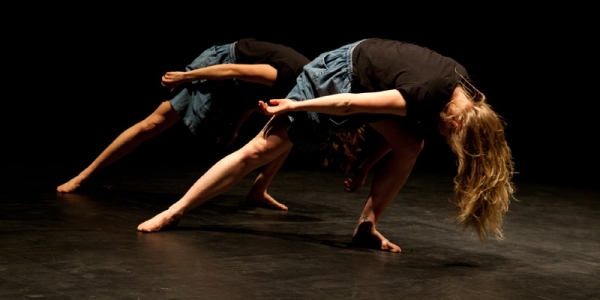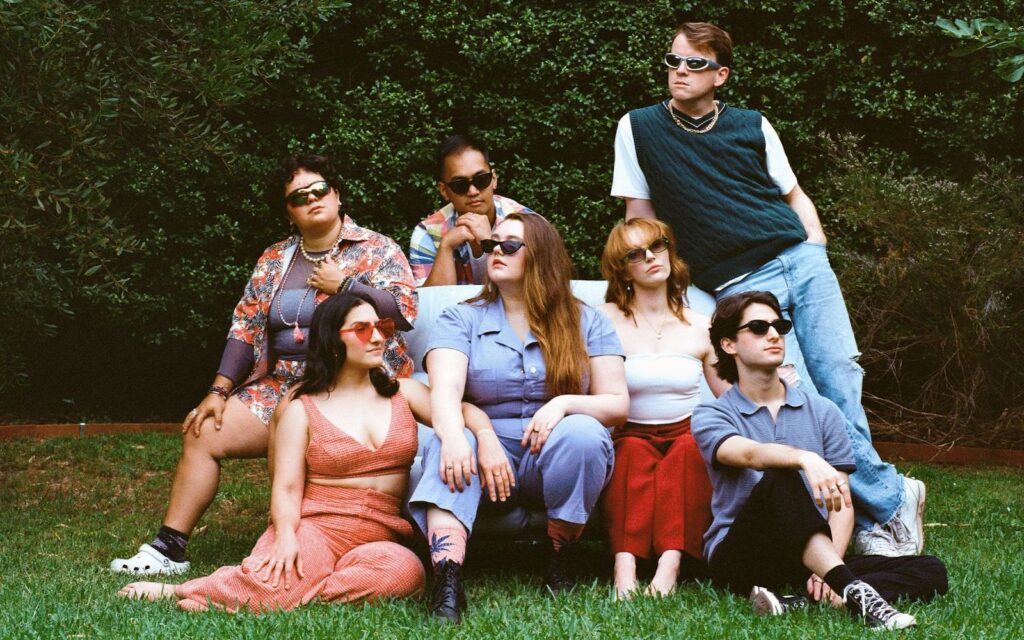“I didn’t know what to call the show,” Abbott tells me, but as I looked at the repetition and the subtle shifts, I realised that what we were doing was a lot like fractals. You think you’re watching the same thing,” she says, “but then something starts happening that’s slightly different, and you realise it’s all changing. Fractals aren’t perfect, but there’s repetition in their patterns, and that’s a really intriguing idea.”
Abbott performs in the show alongside fellow dancer Rebecca Jensen, and the physical similarities between them support the idea of repetition. “Rebecca and I look quite similar, and the show puts us on stage together, inviting the audience to compare us, but as it goes on, you realise how different we are,” Abbott says. “When we were making the show, Rebecca would often ask me for more specific details as to what she should do to make her moves more like mine,” she continues. “The thing was, what she was doing was already perfect.” The two were in the same studio going through the same process and learning the same moves, but performing them in subtly different ways. “It wasn’t about finding perfect unison,” she says, “it was about the disparities we found in that unison. The little mistakes and the little things that happened have become as much a part of the performance as the set moves.”
The sound and lighting design also play key roles in the show. “I knew I wanted to have some blackouts and specific lighting features,” Abbott continues, “because I knew I wanted the audience to feel immersed, to draw attention to certain non-spectacular moments through lighting and sound.” Daniel Arnott and Govin Rubin, acting respectively as sound and lighting designers, helped Abbott bring this vision to life. “The intense lighting is a key part of the show,” she says. “It goes from really bright to really dark, and back. Then there’s the sound – we’ve decided to amplify the space, so we’ve put microphones down in each corner, and they take the sounds from the performance. The stage itself is in the round – you get to see all the moves from different angles, as it shifts one way and then the other. I feel like these things will help people reimagine and re-contextualise the performance.”
As both performer and director, Abbott realised she needed an outsider’s perspective to help her fully come to grips with the show – this is where dramaturge Matthew Day stepped in.
“I went to uni with Matthew,” Abbott says, “although he finished before me, and he’s been making his own work for quite a while now. I knew I needed somebody to work with me on this thing, because I was such a big part of it and couldn’t separate myself from it. Someone suggested Matthew, and I realised he was perfect. We have different styles. His aesthetic is very minimal, and so is mine, but in a different way. We worked really well together. There’s no way the performance would have been as full without him acting as dramaturge. He really helped me consider what I was trying to do.”
Day helped out tremendously with the concept development, and Abbott says that he made the show what it is by asking the right questions. “There are a few sections in the work, and he really helped me ordering those,” she says. “He sat and watched the show countless times, and asked questions like, ‘Why are these sections in this order? Should you try a different order?’ I’d solve problems by myself and figure them out then come back to Matthew and ask what he thought. He gave a lot of great feedback. It’s great to have that outside eye, and it’s great to have discourse about your own work, because often you don’t know what people will think until you put it in front of them.” The presence of a dramaturge put her mind at ease, as she knew she would be putting the best possible show before her audience. “That’s a big reason I’m so satisfied with how the work turned out, conceptually,” she says.
Abbott’s background is in dance, and indeed, Physical Fractals is appearing as part of Dance Massive 2013 – however, the thing that excites her most is the show’s potential to cross between different genres. “With this show, I wanted to explore something that wasn’t just dance,” she says. “I trained in the area, but I was interested in exploring other art forms. In some ways, I feel like this is a mixture of performance and sound art. It’s a moving painting, in a way. This is not your usual contemporary dance experience, which is exciting for me, because that’s something I’ve been trying to do for a while. I’m also very happy that I’ve had the chance to put on a full-length work, and explore a full-length idea.”
BY ALASDAIR DUNCAN







